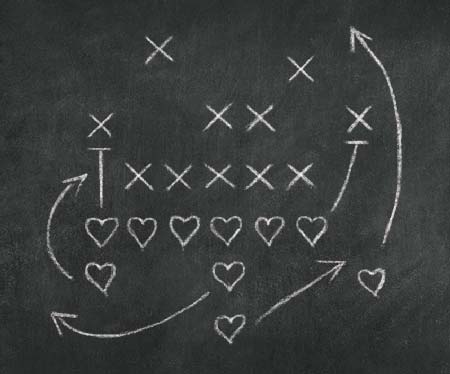Although sudden cardiac arrest is rare in younger people, it can happen.
Sudden cardiac arrest occurs when the heart unexpectedly stops beating. This leads to the loss of consciousness and collapse and can be fatal, if not treated within minutes.
It’s thought to be a leading cause of death in young athletes, but also affects children who do not play sports.
“It’s rare, occurring in less than 2 in 300,000 young competitive athletes,” said Dr. Uzoma Okorie, a pediatric cardiologist with Marshfield Children’s.
It can happen during exercise, while at rest or during sleep.
What causes sudden cardiac arrest?
Sudden cardiac arrest is most commonly caused by hypertrophic cardiomyopathy, a condition in which the muscles of the heart are severely thickened, making it difficult for blood to exit the heart.
It also may be caused by:

Sudden cardiac arrest occurs when the heart unexpectedly stops beating. This leads to the loss of consciousness and collapse and can be fatal, if not treated within minutes.
- Congenital heart disease
- Genetic conditions that affect the heart’s electrical impulses and can cause fast or chaotic heart rhythm or cause the heart to pump too fast.
- Heritable connective tissues diseases like Marfan Syndrome, Loeys-Dietz syndrome, Familial thoracic aortic aneurysms/rupture
- Cardiomyopathies including other heart muscle abnormalities which may cause the heart to be dilated or restrictive (not relax normally)
- Coronary artery abnormalities, or defects in the arteries that connect to the heart that leads to decreased blood supply to heart muscle during exercise.
- Genetic conditions that affect the heart’s electrical impulses and can cause fast or chaotic heart rhythm or cause the heart to pump too fast.
Should my kids be tested to see if they are at risk?
“Screening tests like an electrocardiogram (EKG) for all children or athletes isn’t recommended,” said Dr. Okorie. “Running tests without a cause may cause unnecessary anxiety or may result in false positives, which would require more testing.”
Rather than undergoing preventive tests, know the warning signs and risk factors.
These include:
- A family history of unexpected death in a healthy family member under age 50.
- A family history of heart problems.
- Chest pain or fainting during exercise.
- An abnormal heart rate or rhythm.
- Passing out or having a seizure without warning while exercising.
- Being born with a congenital heart defect.
“Genetic screening for children who are at a higher risk due to a family history can be an effective way to help reduce the risk of sudden cardiac death,” said Dr. Okorie.
You can help prevent sudden cardiac death in many ways
It’s encouraged your child has routine well-child visits and sports physicals. These appointments provide a complete physical exam with a detailed health history to help identify risk factors that may lead to sudden cardiac death.
“Pediatricians are at the forefront of all screening exams, including sports screenings,” Dr. Okorie said. “They refer children to pediatric specialists if they detect anything that is worrisome in an exam, clinical history or family history.”
Screening all students at every school isn’t practical but this type of information can be included in pre-participation sports screenings.
That screening typically includes questions about whether the student has ever passed out or has had chest pain, chest tightness or abnormal heart beats during exercise. The provider performing the screening also will listen for any unusual sounds, like heart murmurs.
Finally, make sure your school or sports facility has an automated external defibrillator (AED) in a well-marked spot.
“An AED is a lightweight, portable device that checks the heart rhythm and can send an electric shock to the heart to try to restore a normal rhythm,” said Dr. Okorie.
Ideally, every home, school or community facility should have people trained in cardiopulmonary resuscitation (CPR) and use of AED. AED machines typically have easy-to-use instructions printed on them. Most AEDs will even give you voice prompts to let you know if and when you should send a shock to the heart.
You can often find AEDs in places with large numbers of people, such as shopping malls, golf courses, businesses, airports, airplanes, casinos, convention centers, hotels, sports venues and schools.
Sudden death of a child, whether an athlete or non-athlete is a tragic event for the family and community. Early recognition of cardiac arrest, together with good CPR and AED use, can help prevent sudden cardiac death.
For questions about sudden cardiac death, talk to a Marshfield Children’s provider.
Schedule appointment Message your provider
Related Shine365 articles:
4 things to know about a sports physical
Common sports injuries: What to know about prevention and treatment
Athletic trainers help with emergencies, recovery and prevention

